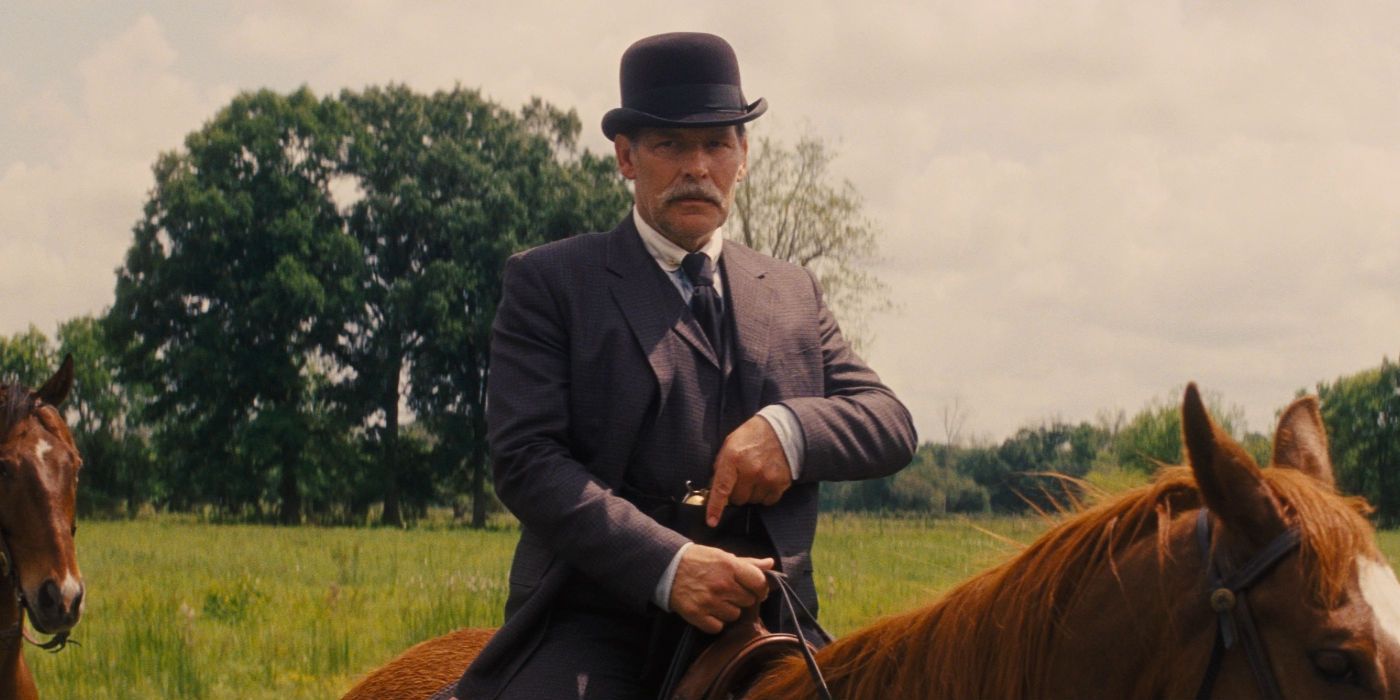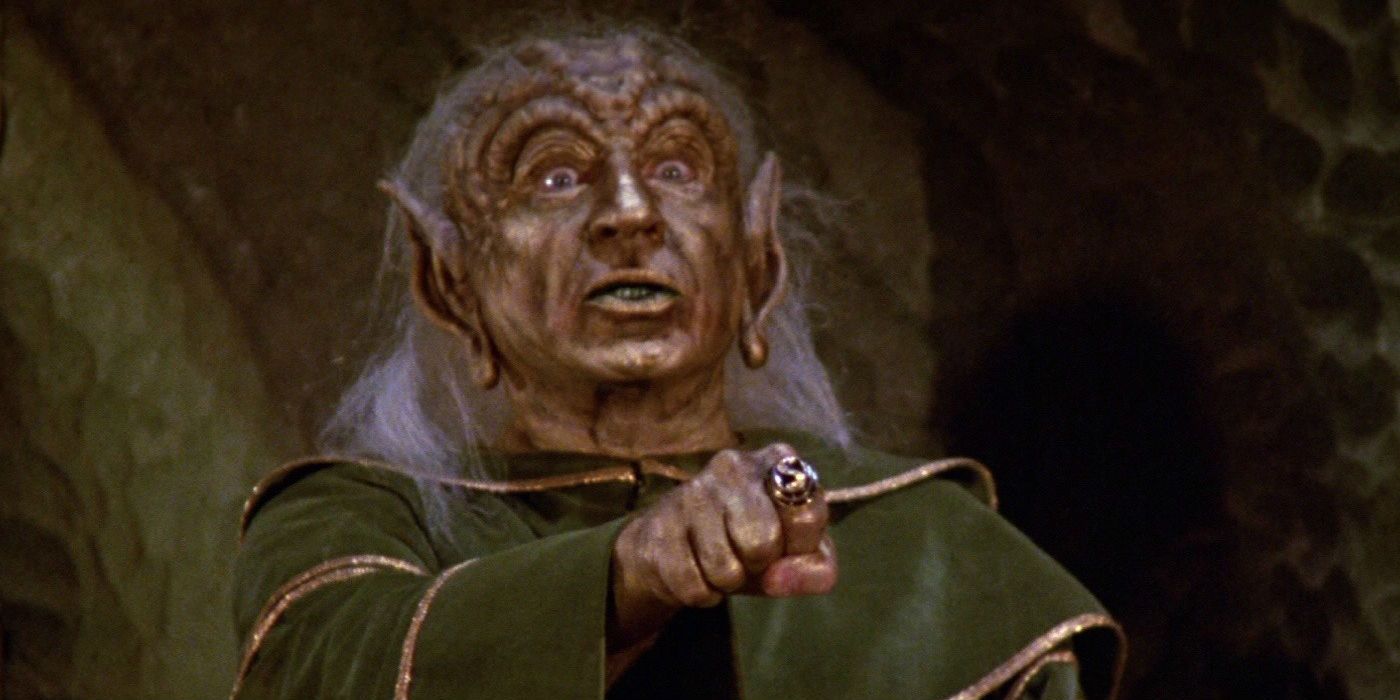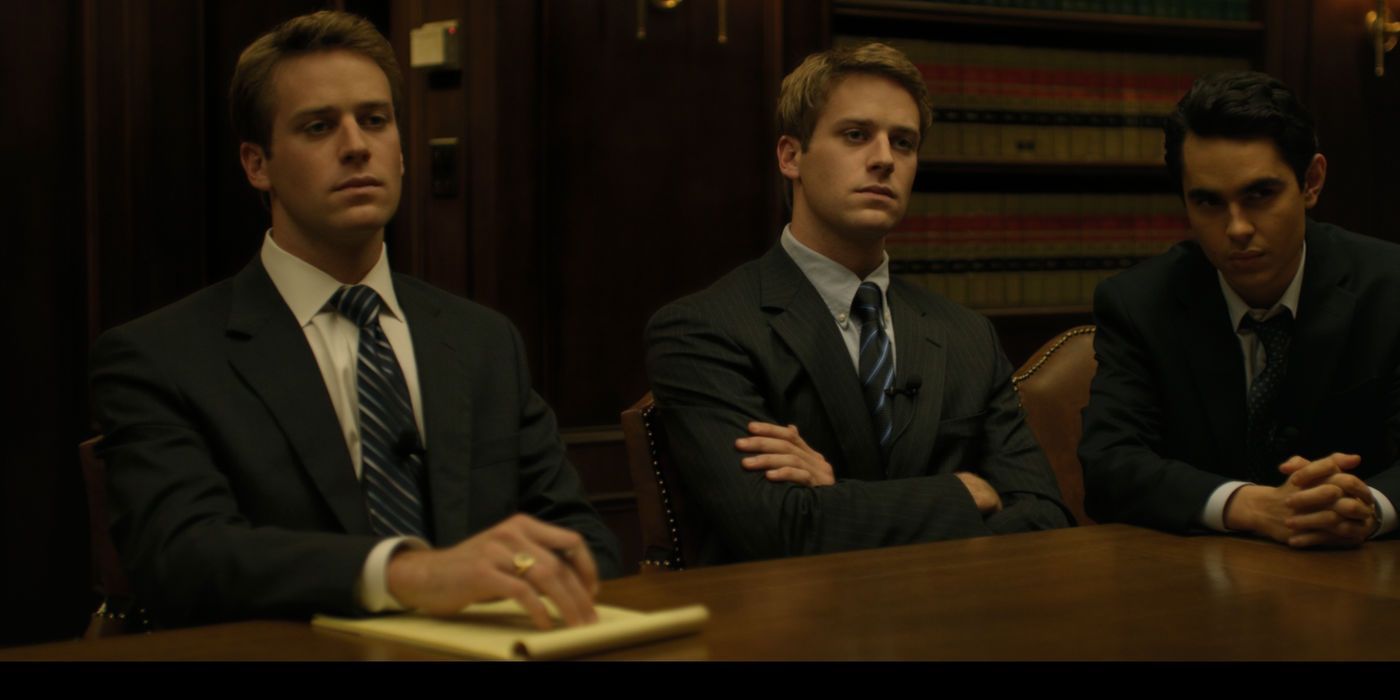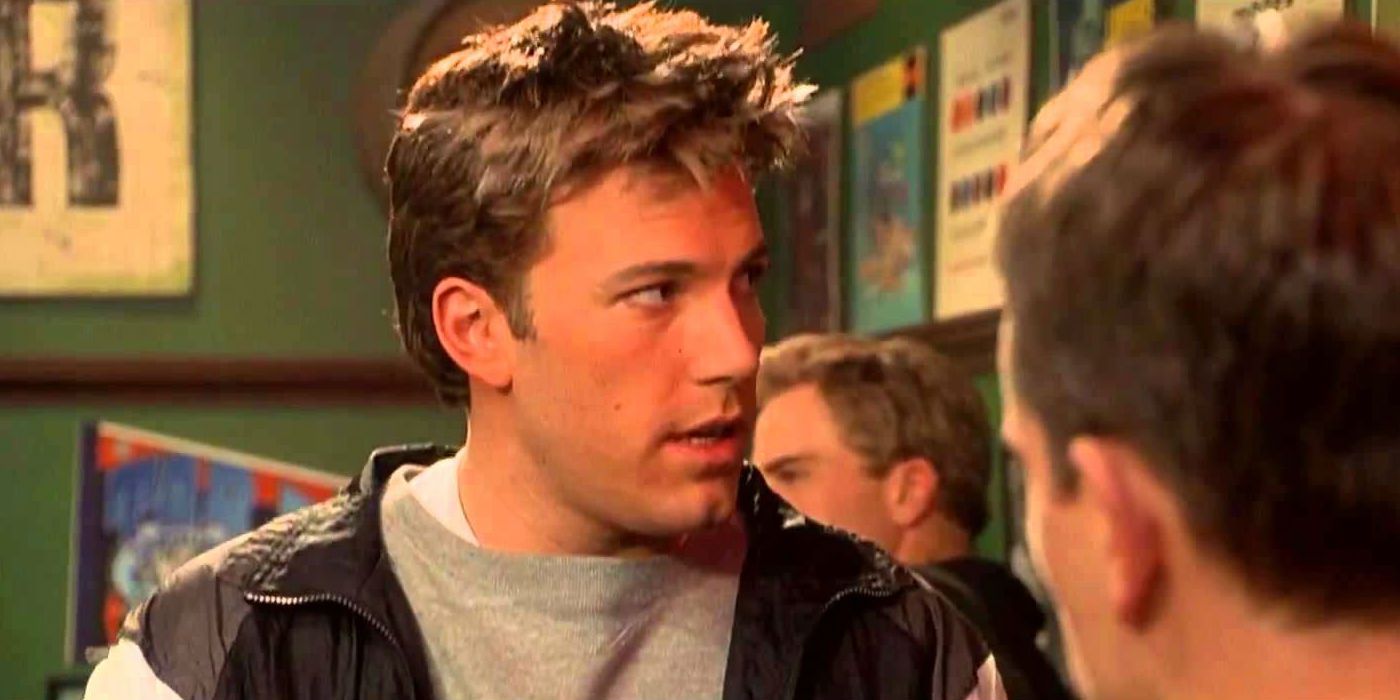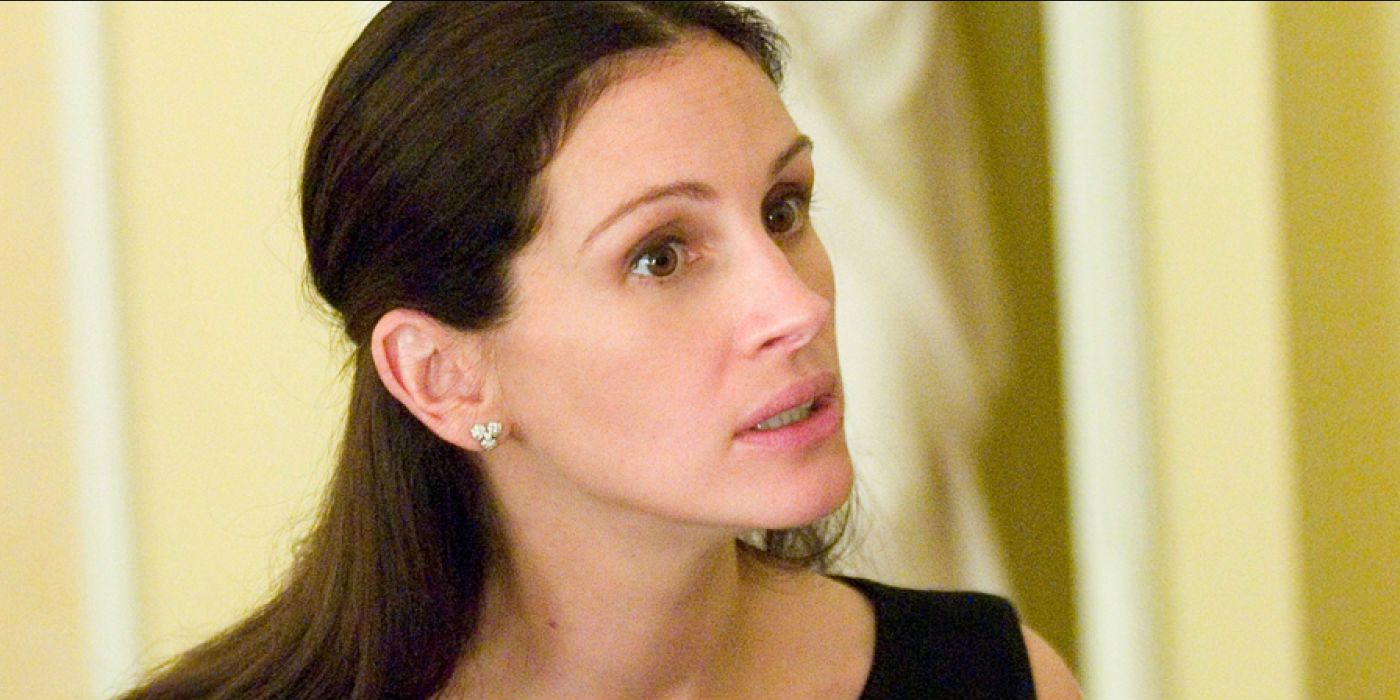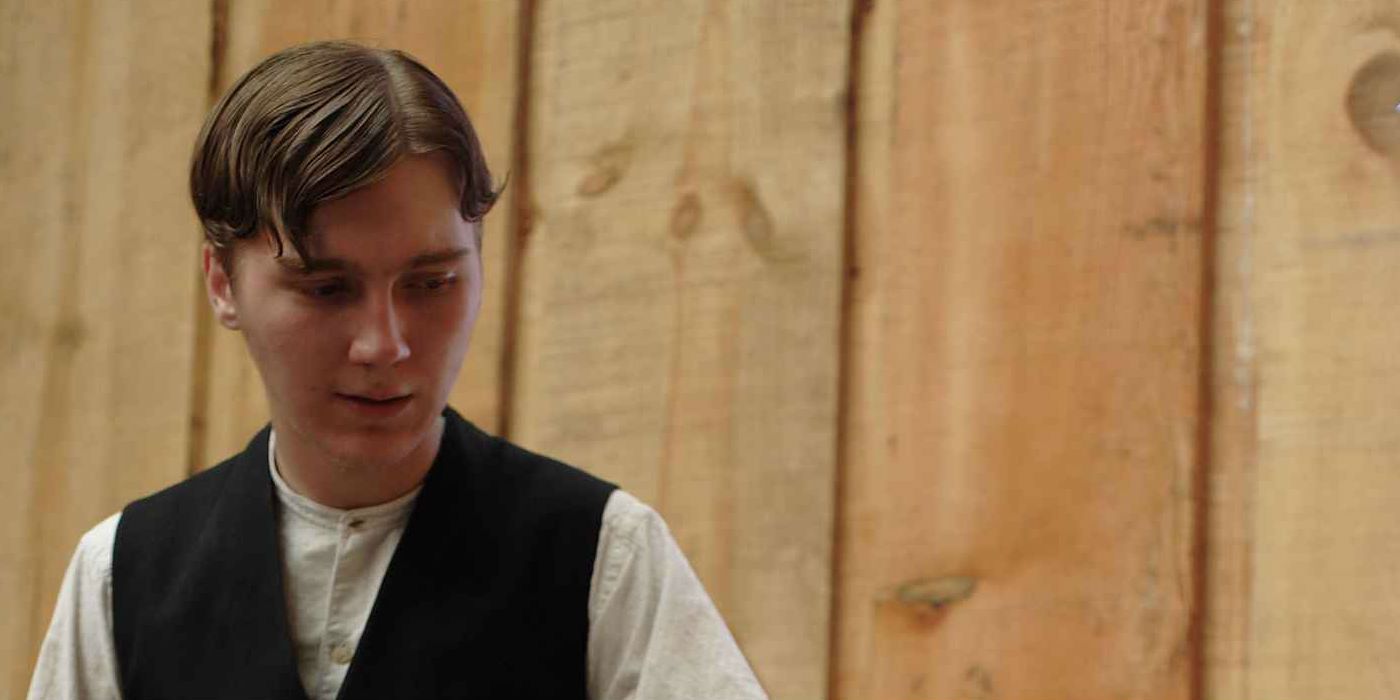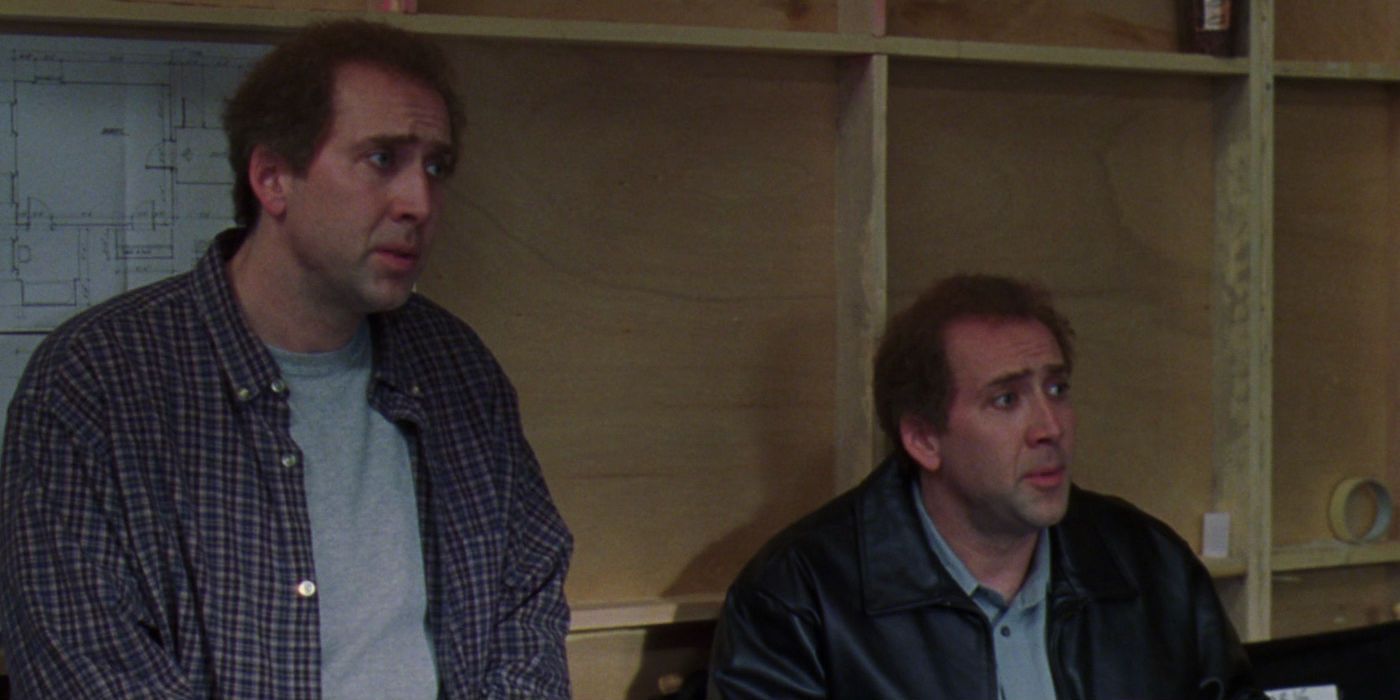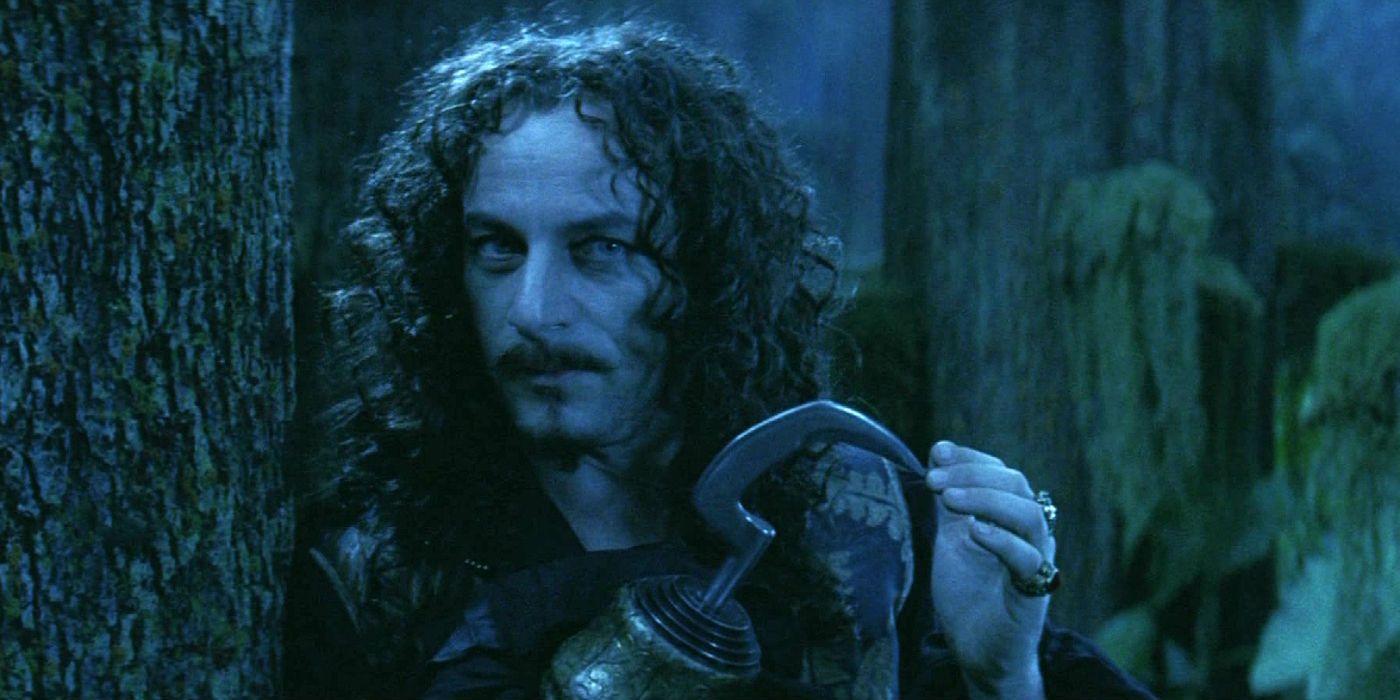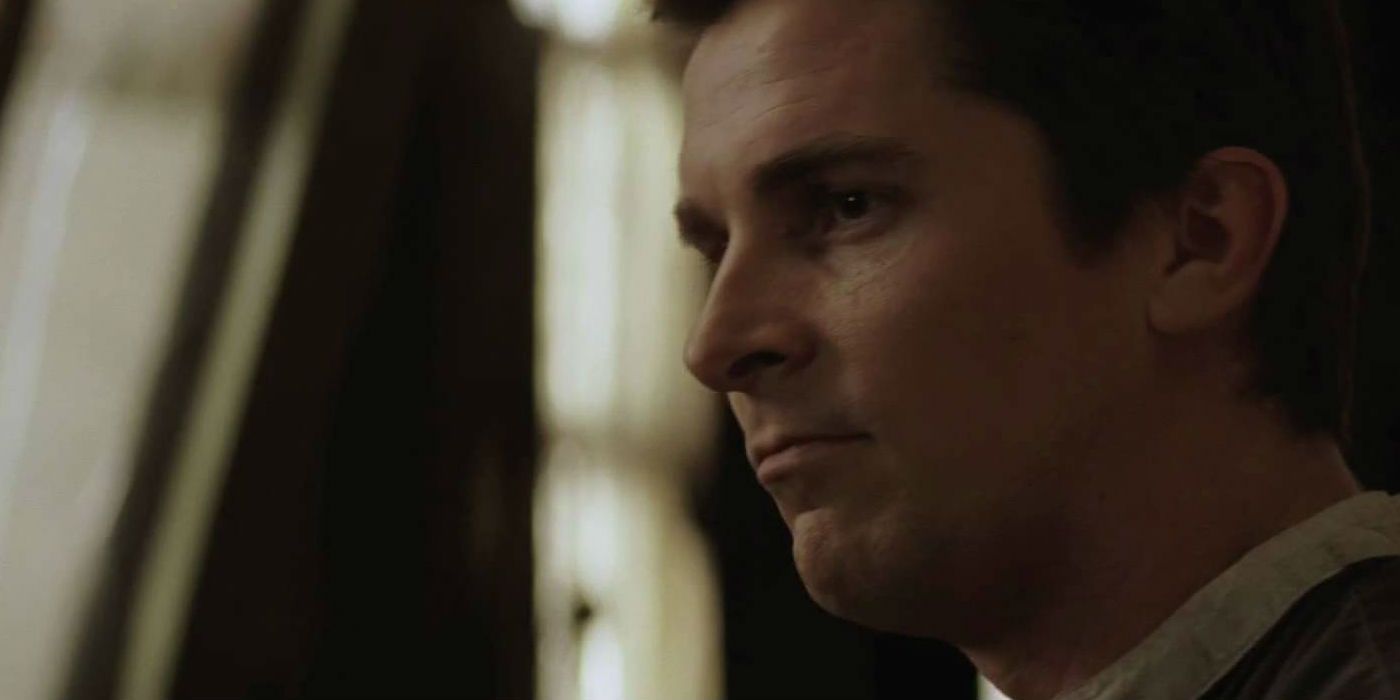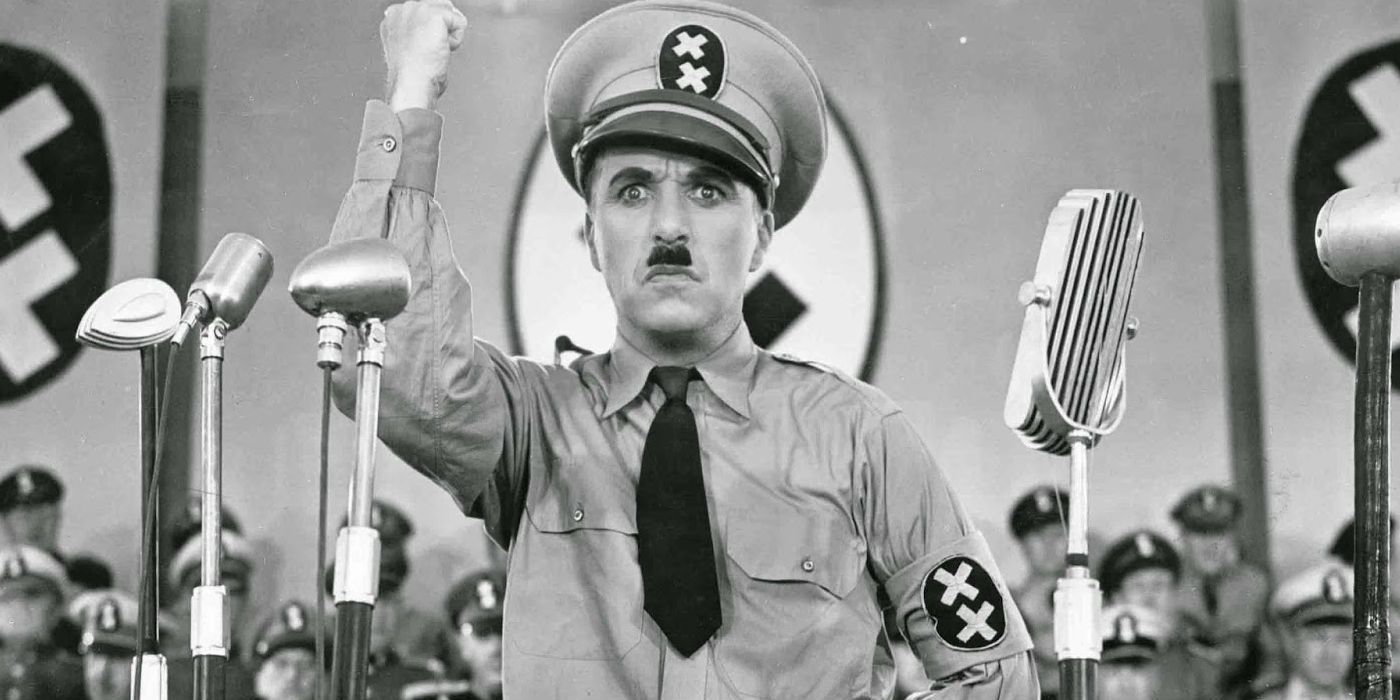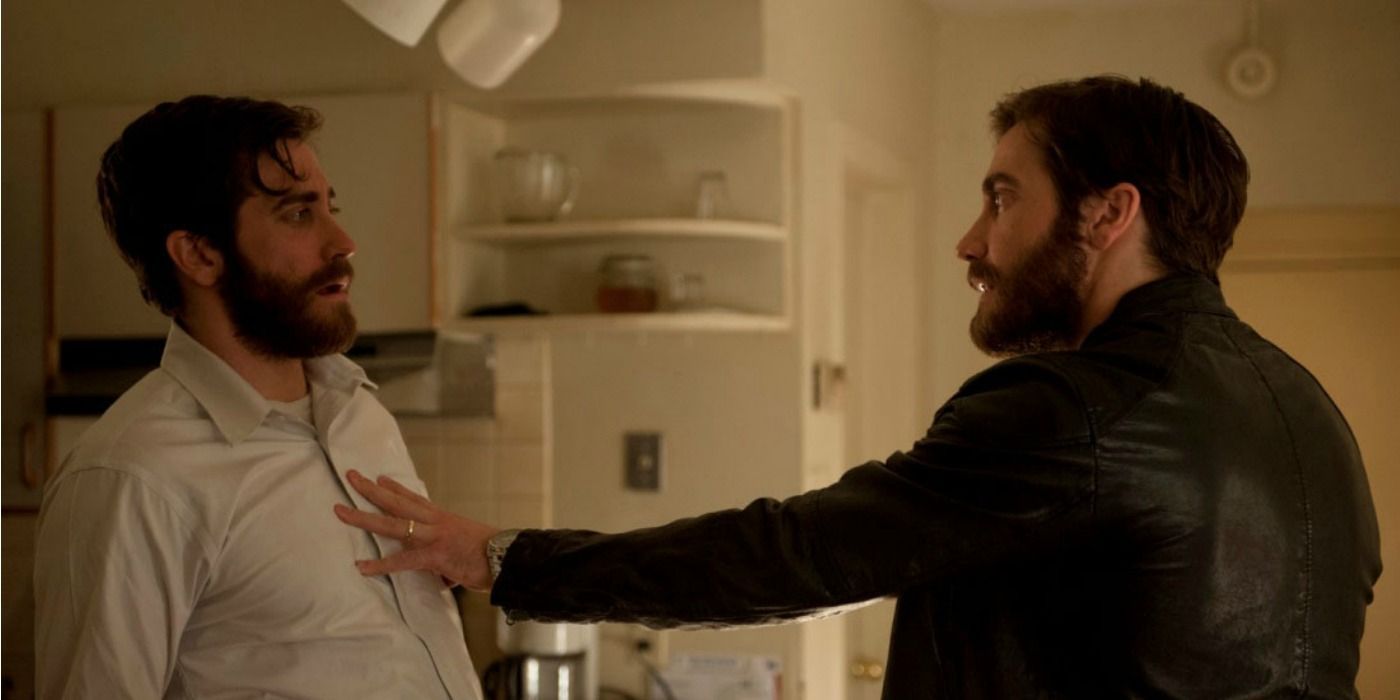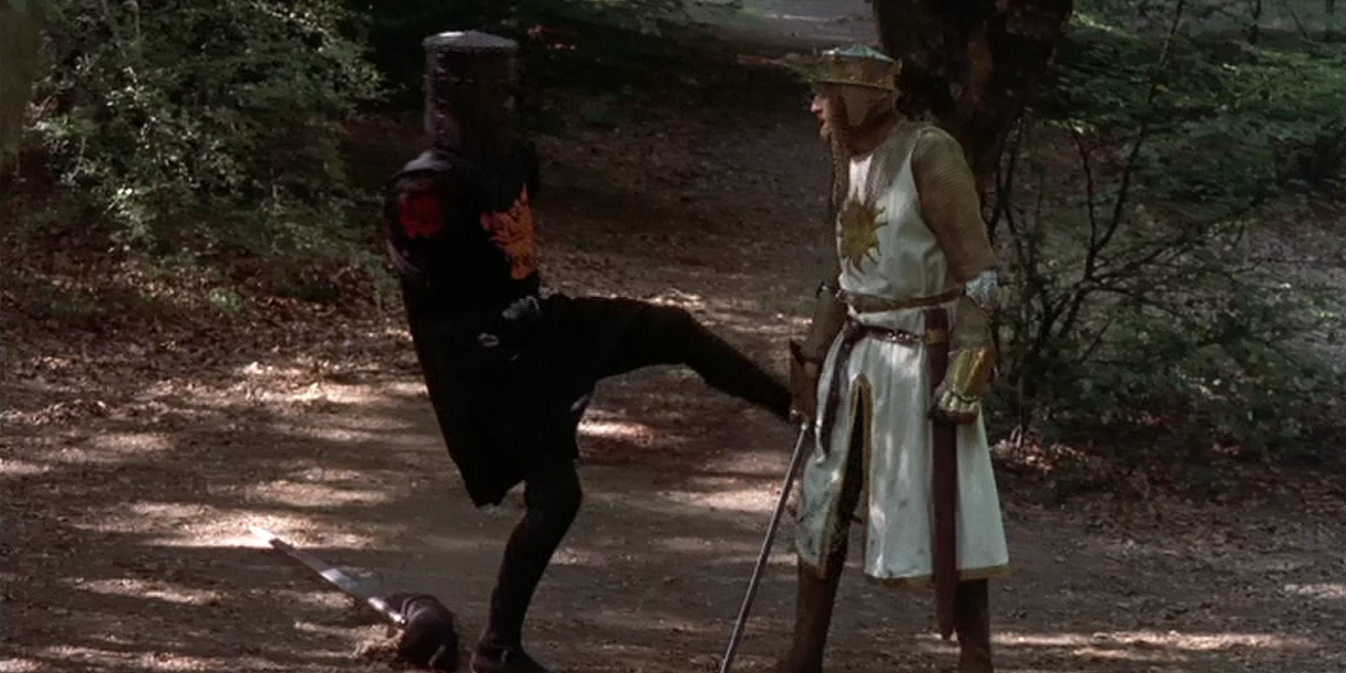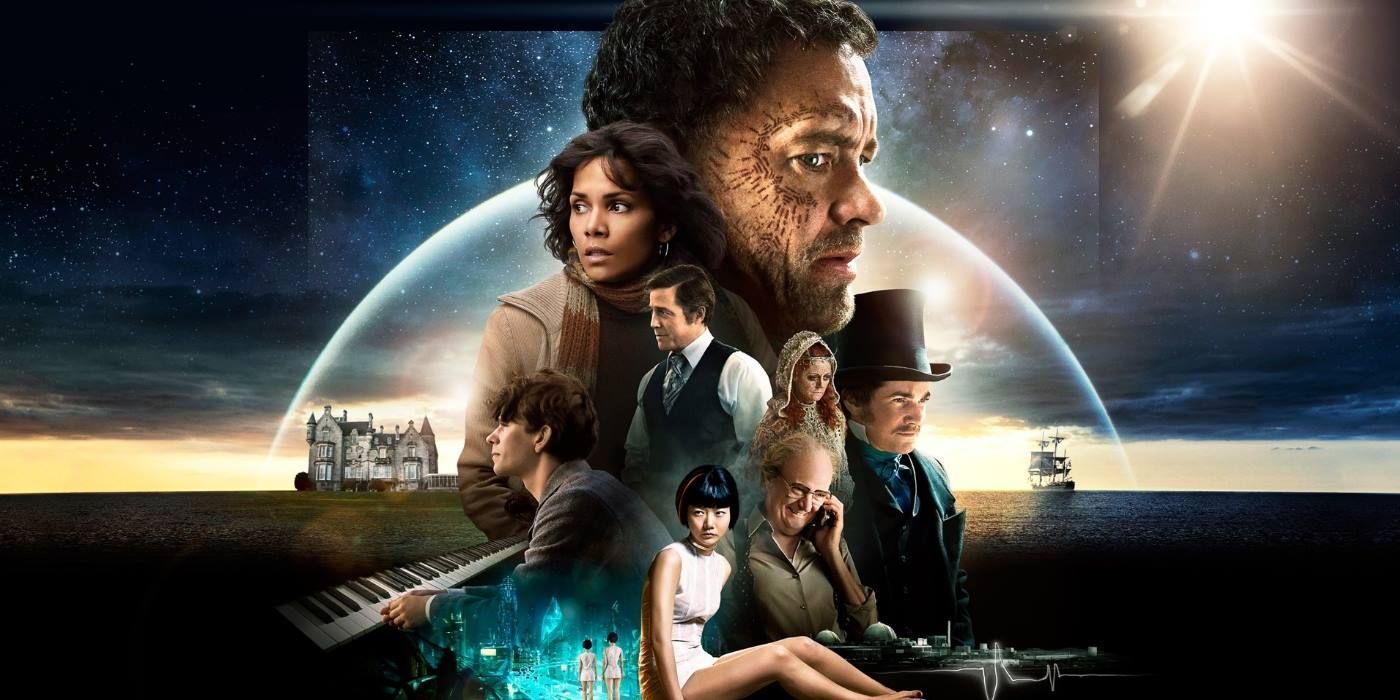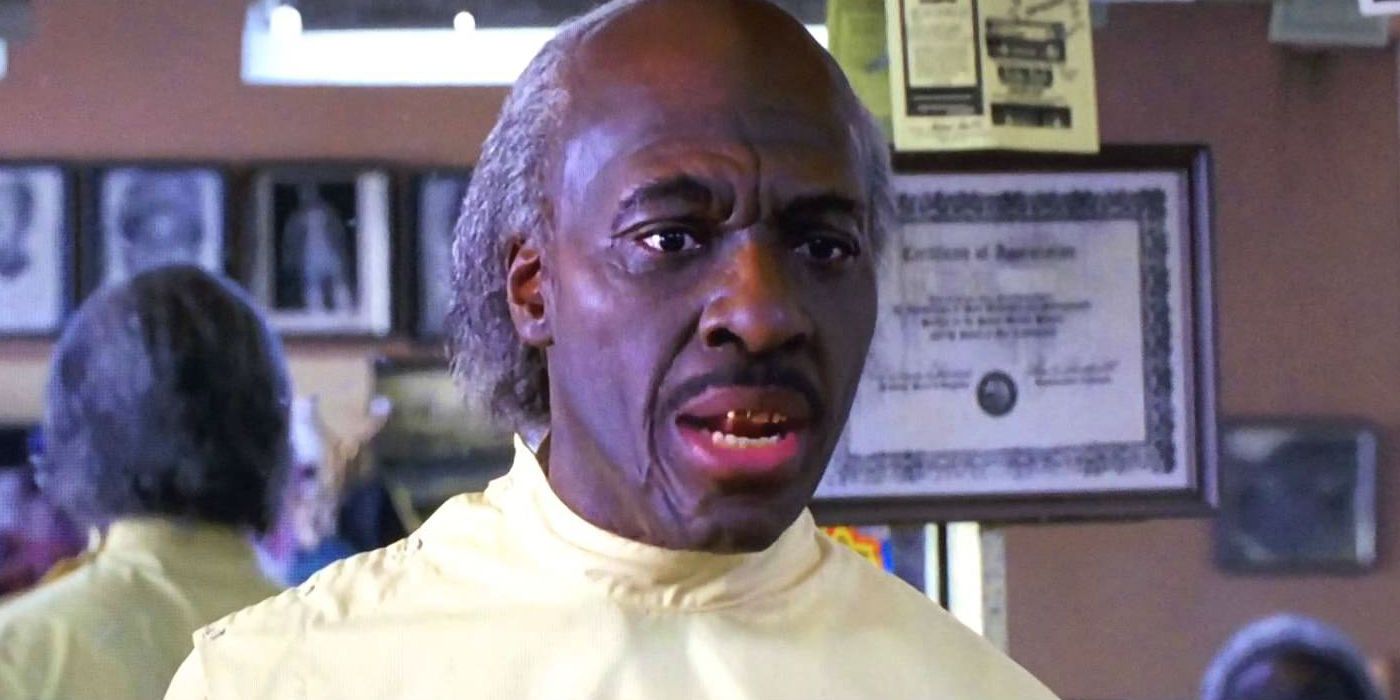The Dual Role has a rich history in cinema (and stage), as a tool with a multitude of uses. Sometimes, the effects are purely comedic; think of Eddie Murphy, Monty Python, Mike Meyers, Mel Brooks, and others who have woven themselves through their films in creatively hilarious ways. Other times, the dual role can be a pure plot device. Films like The Prestige (on this list) turn the device into a plot twist, a way to advance or resolve the events of the film. Still others use multiple performances as a dramatic device, with thematic ramifications - consider films like Enemy, or Adaptation. And lastly, there are the quotidian concerns of a film production - budget, logistic convenience, availability - that drive the usage of this character device. Paying one actor for two roles can be cheaper than hiring two actors, after all.
There are many examples of an actor or actress taking on more than one role in a film. This list numbers a few of the most memorable instances - these are 15 Actors Who Played Multiple Roles in One Film.
15. James Remar as Ace Speck and Butch Pooch in Django Unchained
It is either a testament to James Remar’s shape-shifting ability or lamentable evidence of his forgettability that you probably didn’t realize you saw the actor twice in Django Unchained.
Remar first appears as Ace Speck, the slave owner who counts Django as his property at the film’s start. In the memorable introduction of Christoph Waltz’s Dr. King Schultz character, Schultz tracks the Speck brothers into the woods, where he frees Django by killing Ace and crippling his brother Dicky. Ace didn’t last long in the film, but Remar wasn’t done despite his character's death.
The actor would have his revenge later in the film, this time playing the role of Butch Pooch, the bodyguard of Django Unchained’s primary antagonist. As Pooch, Remar got the opportunity to kill Schultz, avenging the his first character in the film, Speck.
It’s unclear why Remar pulled double duty in Django. It could just have been a matter of serendipity on set, opportunity meeting readiness. It could have been a callback to the practice in early cinema, another Easter egg from a director who loves referencing old films. Either way, it’s a funny little wrinkle in the filmography of a career character actor.
14. Mel Brooks – President Skroob and Yogurt in Spaceballs
Mel Brooks has a long and colorful history of casting himself in his own films, often as more than one character. He did it as a governor, chief, and aviator in Blazing Saddles in 1974. In 1981, he played five roles in History of the World: Part I; six years later, he portrayed President Skroob and Yogurt in Spaceballs.
There is a rich comedic history of actors playing dual roles in films. Stars like Eddie Murphy and Mike Myers have regularly used their chameleonic talents for laughs in films spanning decades, plural. But with actors like them, the value in the role-juggling comes from the actor’s virtuosity; that moment when the light bulb goes off and you can’t believe you are only watching one person.
Mel Brooks goes the other way – the majority of his characters are all pretty decidedly Mel Brooks, only with varying degrees of a Yiddish accent. Yogurt was hilarious; but you didn’t have to wonder who was playing the sci-fi sage. It was pretty clearly the same guy playing President Skroob.
13. Tom Hardy – Reggie and Ronnie Cray in Legend
Tom Hardy didn't play two roles in Legend as a comedic gag; it was required for historical accuracy. The film was based on the real life Kray Twins – a set of English brothers who were two of the most notable gangsters in London in the 1950’s and 1960’s. The twins muscled their way into the criminal market in London, eventually getting large enough to garner the attention of American heavyweights like Meyer Lansky.
Legend tells the story of the brothers’ rise and fall, beginning with their emergence as a criminal element and ending with their apprehension. Tom Hardy’s performance was so compelling because of the true duality of these roles. One brother was a polished operator, the other a mercurial psychopath. Both capable of swift and decisive violence. The film performed modestly, bringing in $43 million at the box office on a $25 million budget; with the majority of that box office gross coming worldwide, inflated by audiences in the UK.
Despite lukewarm reception to the film, it is worth seeing for Hardy alone, who shines as the Kray twins. We hope he was paid by the role.
12. Armie Hammer – The Winklevoss Twins in The Social Network
The Social Network doesn’t totally frame The Winklevi (as Jesse Eisenberg’s Mark Zuckerburg refers to them in the film) as villains, just as it doesn’t frame Zuckerberg as a hero. The film successfully reflected the haziness of collective memory; the gray area that most likely exists in the interpersonal relationships surrounding any great technological advancement.
That didn’t stop us from hating the Winklevoss twins for all 120 minutes of The Social Network. Armie Hammer’s portrayal of the brothers was a masterclass in audience annoyance. Privileged, devoid of perspective, offensively handsome, and impossibly arrogant, we couldn’t help but enjoy seeing the Winklevoss twins lose at something for what seemed to be the first time in their life.
Aaron Sorkin’s script for the film took plentiful liberties, warping reality. The writer himself declared his first responsibility to storytelling, after he was criticized for not reflecting events as they happened. It’s possible – probable, even – that the real life Winklevoss twins are nothing like their portrayal in the film. But for us, they will always be defined by Armie Hammer’s smirking, petulant and infuriating performance.
11. Ben Affleck as Holden McNeil and Ben Affleck in Jay and Silent Bob Strike Back
Before truly penetrating the American consciousness with 1999’s Good Will Hunting, Ben Affleck put in quality work in Kevin Smith’s “View Askiewniverse”, with roles in Mallrats and Chasing Amy. In 1999 – once Ben Affleck was Ben Affleck – he reappeared in a starring role in another Smith film, Dogma. So it only made sense for Affleck to have a bit part in 2001’s Jay and Silent Bob Strike Back. The film was something of a coronation for its titular characters, who went from peripheral bit players in early View Askew productions to fan favorites in later years. Strike Back also revisited many characters from other Smith films, which all existed in the same world.
Holden Mcneil (Affleck) was the protagonist of Chasing Amy; in Jay and Silent Bob Strike Back, Jay and Silent Bob visit him early in the film. Later in the film, Affleck shows up again, this time filming the fictional Good Will Hunting 2: Hunting Season. It was a funny use of the universe Smith built, as well as an opportunity for Affleck, then a budding superstar, to poke fun at himself and his industry.
10. Julia Roberts as Tess Ocean and Julia Roberts in Ocean’s 12
Julia Roberts playing Danny Ocean’s wife and herself in Ocean’s 12 isn’t exactly a demanding dual role like some of the other achievements in this list. Instead, it was the type of “Hollywood-y” in-joke that can be off-putting if not handled correctly. While Ocean’s 12 was derided overall, Julia Robert’s sequence was handled skillfully and played for laughs.
Without getting into the highly convoluted plot of the film, at one point Tess Ocean – Danny’s Wife, played by Julia Roberts – must attempt to impersonate real life Julia Roberts for some reason or another. The why of the thing is sort of irrelevant. It's Julia Roberts playing a character pretending to be Julia Roberts, going as far as to feign pregnancy, as a nod to the real life pregnancy of the actress herself. It’s meta enough to give you a headache, but it also included little gems like Matt Damon needling Bruce Willis for never having won an Oscar, and Julia Roberts poking fun at herself.
The sequence was also a logical extension of the dynamic we always expected to be at play in the Oceans Films; as much as they were about storytelling and movie making, they were also about real-life rich, beautiful people enjoying hanging around one another.
9. Paul Dano as Eli and Paul Sunday in There Will Be Blood
Paul Dano was originally cast by director P.T. Anderson in the role of Paul Sunday, brother of the reverend Eli. Two days into shooting the film, Anderson had a revelation; He removed the original actor slated to play Eli Sunday, moved Paul Dano into the dual role, and modified the script to make the two brothers identical twins.
Dano was nominated for a BAFTA Award (among others) for his performances in the film. He was undoubtedly, and rightly, overshadowed by the tour de force performance of costar Daniel Day Lewis; all the same, the director’s choice to move Dano into the role of Eli Sunday was an inspired bit of casting in its own right. Dano’s smarmy preacher was even less sympathetic than the film’s main character; the joy of watching his comeuppance was fostered by The Actor’s performance.
There Will Be Blood also helped launch and shape Dano’s career, which has been defined by meaty roles in smaller films like Prisoners, Love & Mercy, and Swiss Army Man. For Dano’s sake and the sake of the film, we are grateful that P.T. Anderson made his daring, last-minute casting decision.
8. Nicolas Cage as Charlie and Donald Kaufman in Adaptation
It’s hard to describe Adaptation without tumbling down a self-referential rabbit hole; as movies about movies go, few films surpass this one.
Adaptation was supposed to be a big-screen adaption of The Orchid Thief, a 1998 non-fiction book by Susan Orlean. Charlie Kaufman, the screenwriter responsible for staggeringly original works like Being John Malkovich and Eternal Sunshine of the Spotless Mind, was tapped to adapt the book into a screenplay. In real life, Kaufman was battling depression and severe writer’s block during the project; so, instead of adapting The Orchid Thief, he wrote a film about Charlie Kaufman struggling to adapt The Orchid Thief.
Nicolas Cage starred as Charlie Kaufman himself; he co-starred as the screenwriter’s fictional twin brother, Donald Kaufman. The film was overwhelmingly successful with critics, in large part because of Cage’s performance. In the film, one Kaufman is a downtrodden and depressed; the other is a seemingly talentless optimist, who succeeds despite himself. The two represent fragments of the real life Kaufman’s shattered persona, and it took a truly virtuoso acting performance to give them life. Cage, for all the meme and gif-fodder he has become, shined in the film. Tom Hanks was originally rumored in the roles, but looking at what Nicolas Cage did in Adaptation, we can confidently say that would have been a mistake.
7. Jason Isaacs as Mr. Darling and Captain Hook in Peter Pan
There is a good chance you forgot Peter Pan existed. Allow us to remind you. Peter Pan was a 2003 live action film, distributed by Universal Pictures, directed by P.J. Hogan, and starring Jason Isaacs. The film had a budget of $130 Million, made $122 Million, and performed OK with critics. So, why is it on the list if it very much lacks the cultural import of other Pan adaptations?
Jason Isaacs portrayed Mr. Darling and Captain Hook in the film. While he performed well and garnered praise for his roles in the film, this casting choice is even more interesting than that. In 1904, when the Peter Pan story first appeared (in Play form), Darling and Hook were both played by Gerald Du Maurier; it was a convenient casting decision logistically, but also highlights the thematic similarities between the two characters, both oppressors in their respective realms.
6. Christian Bale as Alfred Bordon and Bernard Fallon in The Prestige
This entry will spoil the now 10-year-old film, so proceed with caution.
We’ve already listed dual roles that served comedic purposes (Affleck, Brooks) and dramatic (Hammer, Cage). Christian Bale’s performance(s) as Alfred Bordon and Bernard Fallon in The Prestige served a different master altogether: the plot twist.
The film’s big twist is that the Magician Alfred Bordon is not a man, but rather an amalgam of two men – brothers Albert and Frederick, who alternately live as Alfred and Bernard. It is a clever device that enables “Alfred’s” signature trick, which sees the magician transport from one side of the stage to the other. The illusion is a source of great competition and tension between Alfred and Hugh Jackman’s Robert Angier, a rival magician.
The revelation that Bale’s character was actually two men all along was sufficiently mind blowing; it required further viewings to fully appreciate what Bale was doing throughout the film, even though it had been right in front of you the entire time.
5. Charlie Chaplin as Adenoid Hynkel and The Jewish Barber in The Great Dictator
The Great Dictator was the first sound film Charlie Chaplin ever made; it was also Chaplin’s most successful film commercially, and arguably the most important work of his storied career.
In the film, Chaplin portrays the ruthless dictator Adenoid Hynkel and a nameless Jewish barber who looks exactly like Adenoid Hynkel (and they both look exactly like Adolf Hitler). The two characters see their storylines intersect in the film, as their identities are mistaken and the barber is forced to give a speech in the dictator’s stead.
In addition to being a technological landmark for Chaplin, The Great Dictator set a high-water mark for satire and included one of the most famous speeches in film history. The Jewish Barber’s speech is still so resonant that the hugely popular band Coldplay used it in their festival performances this year, 76 years after the film’s debut.
Upon its release, the film was controversial and daring; today, its message is just as prescient as ever, and Chaplin’s dual performance has become one of the most memorable in the history of cinema.
4. Jake Gyllenhaal as Adam Bell and Anthony St. Claire in Enemy
Enemy is a taut psychological thriller from Denis Villeneuve, a director who has increased his impact in the genre since with films like Prisoners and Sicario. The crux of Enemy’s psychological conflict exists in the performance by Jake Gyllenhaal as Adam Bell and Anthony St. Claire.
Bell and St. Claire are doppelgangers in the film, who are unrelated except for their exactly similar appearance. One finds the other, obsession is bred, tension rises, wives are swapped, and eventually said tension boils over in disturbing fashion. It is unclear throughout the film whether the two men exist in reality, or just as portions of one man’s fragmented psyche; the subtle personality quirks and mannerisms that Gyllenhaal imparts in each character keep the audience engaged and render the fantastical premise frighteningly real.
Enemy opened in only 120 theaters across America, and made a total of $3.4 Million worldwide. There is a solid chance you haven’t seen it; but it is most certainly worth watching if only for Gyllenhaal’s performance, which was engrossing enough to enable the film’s entire disturbing premise.
3. John Cleese as numerous characters in Monty Python and the Holy Grail
John Cleese appeared as Sir Lancelot the Brave in Monty Python and the Holy Grail. He also appeared as Swallow-Savvy Guard #2; Man with “Dead” Body; The Black Knight; Witch Hunting Villager #3; Singing Camelot Knight #4; The French Taunter; and Tim the Enchanter. That’s seven roles, and it doesn’t even make Cleese the hardest working actor in the film. That title would go to Michael Palin, who played 12 roles. In fact, the six core members of Monty Python play forty roles in the film between them.
This is a tradition in a certain style of comedy, one popularized by Monty Python and peers like Peter Sellers, and later adopted by comedians like Eddie Murphy, Michael Meyers, Sacha Baron Cohen, and Adam Sandler.
Playing a number of characters in a film, like the members of Monty Python did in this film, has logistical benefits like saving money and allowing for improv to change the direction of a scene or scenes on the fly. It is also the product of the kind of zany and rigorously specific ideas that some comedians have; a byproduct of relying solely on themselves to achieve a vision. And lastly, as the film goes to show, it can be really funny.
2. Just About Everyone In Cloud Atlas
Cloud Atlas is notoriously (depending on which reviews your read that could be ‘famously’) one of the most complex and expensive independent films ever made. The plot takes place over 6 eras, ranging from 1849 to 2321. Characters are tangentially related in those eras, as the film explores concepts related to the soul, karma, and the butterfly effect; in order to pull that off, the film’s cast list looks reads as more of a matrix with each actor playing multiple characters, and many playing up to six.
Tom Hanks, Hugo Weaving, Halle Berry, Jim Sturgess, and Hugh Grant all played six unique characters spread out over the film’s 500-year timeline. Cloud Atlas was extremely polarizing when it was released; some critics praised its ridiculously ambitious scope and emotional resonance, while others considered it a bloated mess with a flawed foundation.
There is probably some truth in each of those diametrically opposite interpretations. But without a doubt, the casting structure of the film was unprecedented and has been unmatched since.
1. Eddie Murphy as Prince Akeem, Randy Watson, Clarence, and Saul in Coming to America
It’s not editorializing to say that Eddie Murphy went from being about the biggest comedy star on earth, to being kind of an irrelevant sideshow; he's a “comeback story” waiting to happen. His fall didn’t happen quickly, though, and over his 30-year film career, Murphy’s work rate and character creation was prolific; throughout those decades, Eddie became known for the off-beat and over the top characters that populated those films. Just as much, he became known for playing a great number of strange characters in one film.
This entry could have focused on The Nutty Professor, or Bowfinger. If we wanted to be mean and snarky, we could have looked at Norbit. Instead, we chose to highlight one of the first and most memorable times Murphy played more than one character in a film; specifically, the hilarious barbershop argument between owner Clarence and the definitively Jewish customer Saul, both played with vigor by Murphy.


